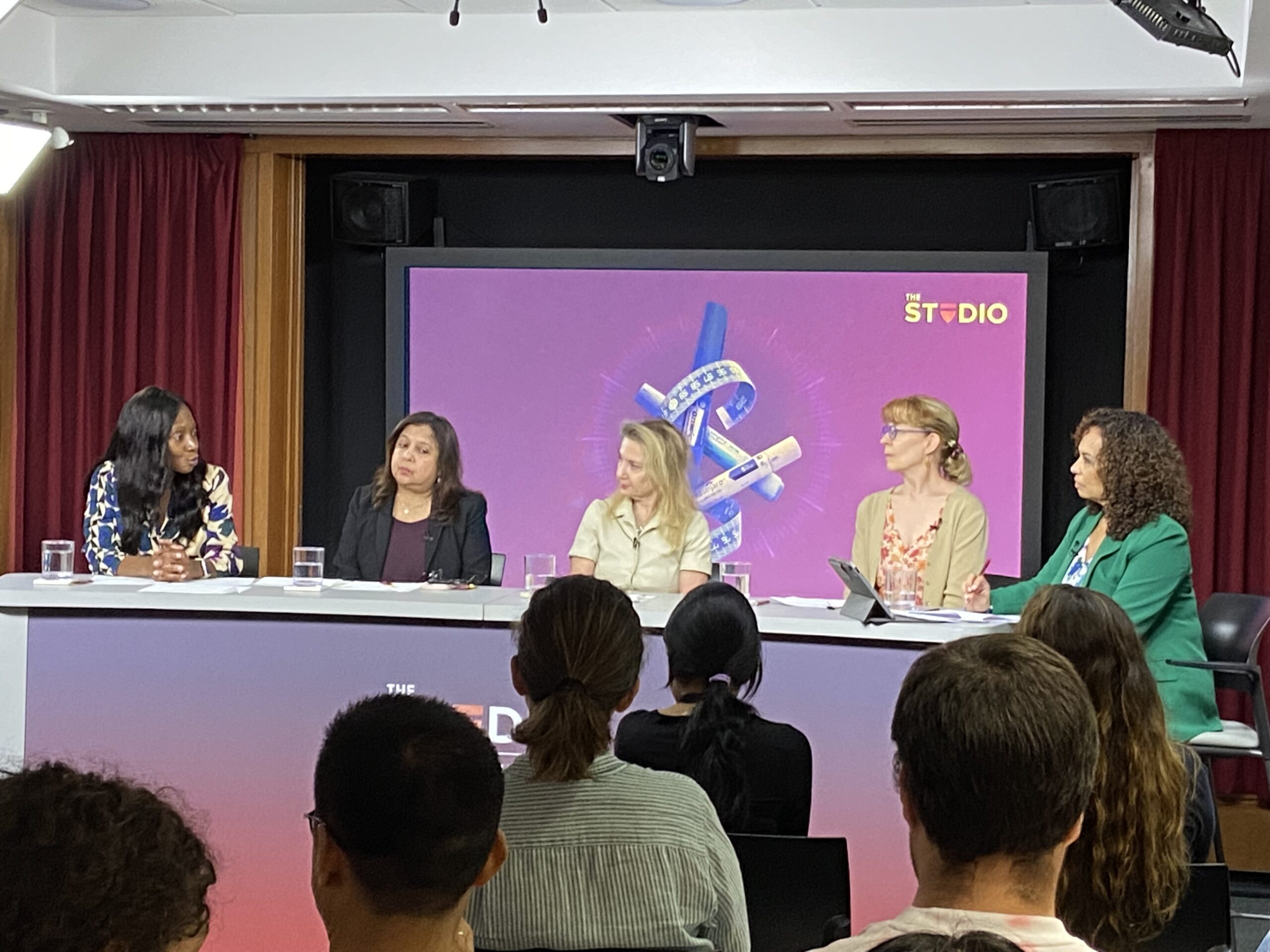A flood of dietary supplements, imitation compounds, and highly processed foods with questionable health value are being pushed at American consumers by companies hoping to piggyback on the widespread popularity of the newest generation of anti-obesity medications, according to Harvard experts on diet, nutrition, and obesity.
“The diet culture-driven frenzy around Ozempic basically poured gasoline on the dumpster fire of predatory industries profiting off of weight stigma and bias,” said S. Bryn Austin, professor of social and behavioral sciences at the Harvard T.H. Chan School of Public Health and professor of pediatrics at Harvard Medical School. “It’s just been devastating.”
The blame goes far and wide, Austin said, starting with drug makers who charge $900-$1,300 for a month’s worth of treatment, five times their cost to manufacture. Those high prices are driving some patients to cheaper compounding pharmacies, which create similar drugs using different formulas that are not FDA approved. As a result, patients are not always certain what they’re getting, with calls to poison-control center about such medications surging 15-fold since 2019, Austin said.
In addition, the frenzy around weight loss fed by these drugs has spawned a blizzard of unsubstantiated, social media-driven claims about the ability of supplements and other compounds to achieve weight loss goals at a fraction of the cost of prescribed medication.
“Using laxatives for weight loss is dangerous, and it can be deadly.”
S. Bryn Austin
Among them are what has been referred to as “nature’s Ozempic,” the plant extract berberine, which has not been shown to help people lose weight, and “budget Ozempic” — another name for laxatives — which Austin called “most dastardly of them all.”
“There is a shortage of laxatives because people are buying this,” said Austin, who is also the S. Jean Means Endowed Chair in Adolescent and Young Adult Medicine at Boston Children’s Hospital. “But using laxatives for weight loss is dangerous, and it can be deadly.”
The new class of diet medications themselves have been widely hailed as the most effective ever for weight loss and have effectively opened a new front in the nation’s obesity epidemic.
The drugs are GLP-1 receptor agonists — semaglutide or tirzepatide — that mimic natural hormones that make you feel full after meals. The most well-known, Ozempic, was created to fight Type 2 diabetes, but it didn’t take long for people to notice weight loss as a side effect. Manufacturer Novo Nordisk reformulated the drug into Wegovy, for obesity treatment.
Experts said the Wild West atmosphere around these drugs and their imitators is enabled by a national landscape of stigma and bias against people with obesity. Though the condition is increasingly viewed as a disease by the medical establishment, Americans are nonetheless obsessed with weight and body image.
“Obesity is a disease that you wear. If someone carries more adipose, we assume that they’re lazy.”
Fatima Cody Stanford
In most of the country, people can be fired from their jobs because of their size without legal repercussions on the employer, according to the experts, who gathered for the event, “Anti-obesity medications: Risks, benefits, and alternatives,” sponsored by The Studio at Harvard T.H. Chan School of Public Health on Thursday.
“Obesity is a disease that you wear. If someone carries more adipose, we assume that they’re lazy,” said Fatima Cody Stanford, an obesity expert and associate professor of medicine at HMS and Massachusetts General Hospital. “If someone’s leaner, we assume that they eat virtuously. Maybe they ate a salad today. Maybe they got up and got on that Peloton bike. Maybe they did a workout today; maybe they went for a swim. We don’t really know, but those judgments set up the most accepted form of bias in today’s society.”
Austin and Uma Naidoo, director of nutritional and lifestyle psychiatry at MGH and instructor at HMS, said some of the blame for the obesity epidemic lies with the easy availability and low prices for ultraprocessed products churned out by the food industry. And though some have speculated that the new anti-obesity medications could be a threat to a business model built around making foods ubiquitous and irresistible, the industries have pivoted and embraced the new environment, the two said.
What that means, Austin said, is the industry has already repositioned existing products as beneficial to those on GLP-1 drugs. They’ve also developed new ultra-processed snack foods targeting people on GLP-1s and those who’ve just come off the drugs.
The strategy is all part and parcel of an approach that sees every new problem on America’s food landscape as a new opportunity to market, Austin said.
“Every problem can be solved with a commodity solution. These commodity solutions create additional problems to which there is a new commodity solution, but for the consumer, this is a house of mirrors,” Austin said.
“The food industry is so savvy. There are clever ways of not really informing the consumer of what they’re eating.”
Uma Naidoo
Nutritional labeling is often designed to be misleading, Naidoo added. Companies add just enough whole grain to be able to include that marker of dietary health in the label, even of otherwise unhealthy foods.
Sugar is a key ingredient in many foods — even those that aren’t sweet — because it can trigger cravings. Fast food companies add sugar to French fries, she said, because even levels too low to taste can trigger compulsive eating.
There are 262 different names for sugar in processed foods, including “brown rice syrup,” which benefits from an association with the whole-grain benefits of brown rice but which Naidoo said is basically just sugar.
“The food industry is so savvy,” Naidoo said. “There are clever ways of not really informing the consumer of what they’re eating.”
Source link

